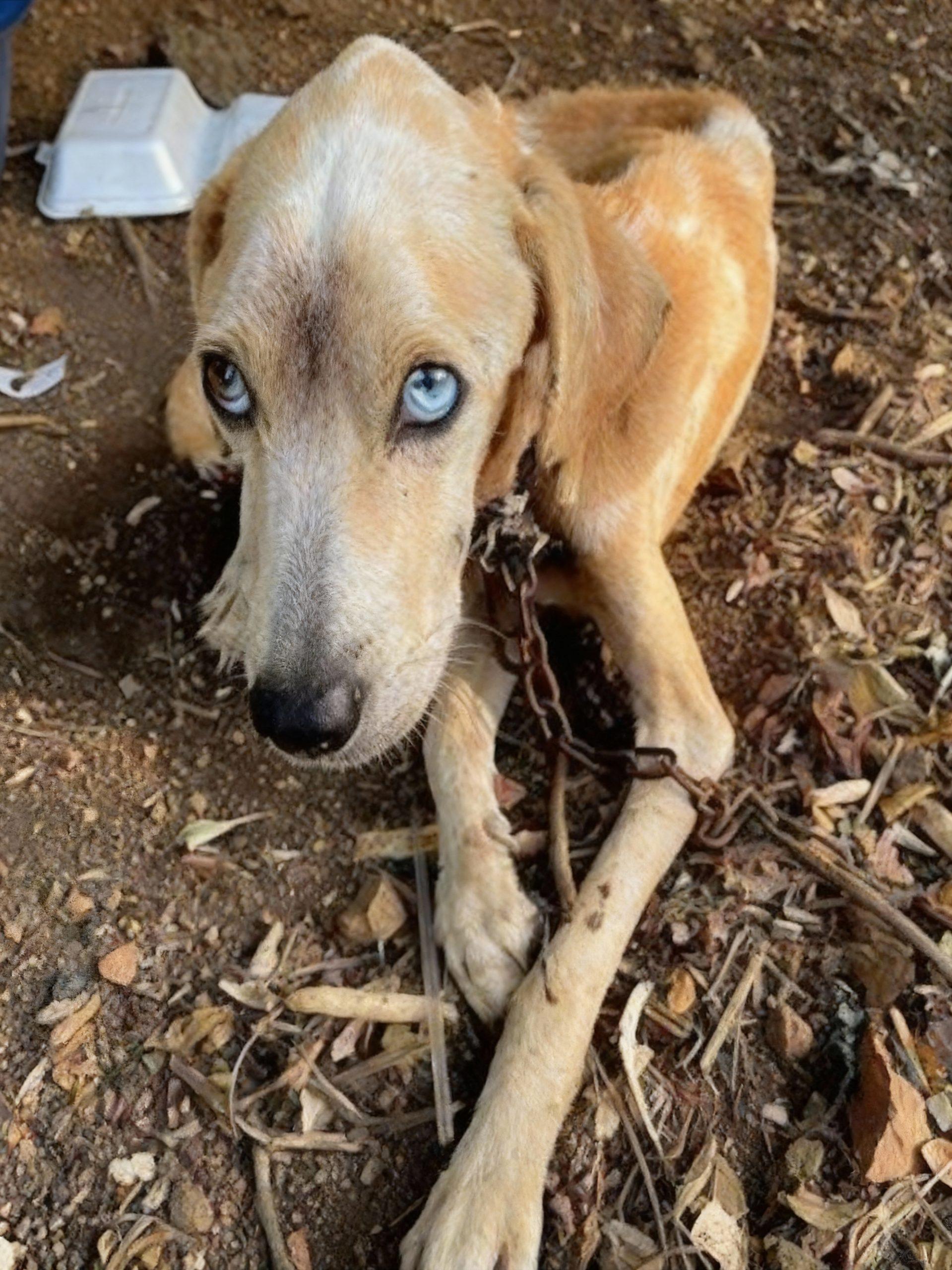In a world bustling with constant demands and distractions, it’s easy to overlook the silent pleas of those who cannot speak for themselves. The image before you — a dog with eyes that tell a story of resilience and vulnerability, one blue, one brown, both holding an undeniable depth — serves as a poignant reminder of the countless animals suffering in silence. This isn’t just a picture; it’s a window into a reality far too common, a reality where neglect and abandonment cast long shadows over innocent lives. The chain around its neck, visible yet not the sole focus, hints at a past perhaps fraught with hardship, while the direct, unblinking gaze suggests an enduring spirit. Its fur, matted in places, and its lean frame speak to a lack of proper care, but within those heterochromatic eyes, there’s an flicker of hope, a silent question directed at us: will anyone help? This article aims to explore the multifaceted issue of animal welfare, using this dog’s compelling image as a beacon to illuminate the urgency of our collective responsibility, highlight the profound impact of individual actions, and inspire a wave of proactive engagement in fostering a kinder world for all creatures.

The silent suffering of animals is a global crisis, often hidden in plain sight. From stray dogs foraging for scraps in urban landscapes to abandoned pets languishing in overcrowded shelters, the scale of the problem is immense. Many animals endure lives marked by hunger, disease, and fear, their days a constant struggle for survival. The emotional toll on these creatures is immeasurable; fear and anxiety become their constant companions, eroding their natural trust and joy. This suffering is not limited to physical ailments; the psychological scars of neglect can run deep, leaving animals timid, withdrawn, or even aggressive. Understanding the true scope of this crisis is the first step towards addressing it, compelling us to look beyond the surface and acknowledge the profound emotional lives of these vulnerable beings.

Beyond the visible signs of physical hardship, the psychological impact of neglect on animals is profound and often underestimated. An animal subjected to prolonged periods of fear, isolation, or abuse can develop deep-seated behavioral issues that make their journey to recovery even more challenging. Trust, a fundamental bond between humans and animals, is shattered, replaced by suspicion and apprehension. These emotional wounds manifest in various ways, from extreme shyness and withdrawal to reactive aggression, making it difficult for them to adapt to new environments or form healthy attachments. Recognizing and addressing these psychological traumas is crucial for comprehensive animal welfare, as healing the mind is as important as healing the body in their rehabilitation process.

While the challenges are formidable, the power of individual and collective action in transforming the lives of these animals cannot be overstated. Every adoption, every volunteer hour, every donation, no matter how small, contributes to a ripple effect of positive change. Adopting a rescue animal not only provides a loving home but also frees up space in shelters for other animals in need. Volunteering at local shelters offers crucial hands-on support, from feeding and cleaning to walking and socializing animals, helping them heal and prepare for adoption. Financial contributions, equally vital, ensure shelters can continue their life-saving work, providing medical care, food, and safe havens.

Moreover, advocacy plays a pivotal role in creating systemic change. Supporting legislation that strengthens animal protection laws, promotes responsible pet ownership, and provides funding for animal welfare programs is essential. Educating communities about the importance of spaying and neutering, the dangers of puppy mills, and the ethical treatment of animals can prevent future suffering. By raising awareness and fostering empathy, we can shift societal attitudes towards animals, moving towards a future where they are recognized and respected as sentient beings deserving of kindness and care.

It’s crucial to acknowledge that the challenges in animal welfare are multifaceted and often deeply intertwined with broader societal issues. Economic hardship can force owners to abandon pets, lack of education can lead to irresponsible breeding, and cultural norms can sometimes perpetuate practices that are detrimental to animal well-being. Addressing these root causes requires a holistic approach, one that integrates animal welfare initiatives with community development, public health programs, and educational outreach. Collaboration between governments, NGOs, local communities, and individuals is vital to creating sustainable solutions that not only rescue animals but also prevent future suffering.

Ultimately, the gaze of the dog in the initial image serves as a powerful call to action, reminding us that every life holds intrinsic value and deserves compassion. Its heterochromatic eyes, though unique, symbolize the diverse and often heartbreaking stories of countless animals awaiting a helping hand. By understanding the complexities of animal suffering, actively participating in rescue and rehabilitation efforts, advocating for stronger protections, and addressing the underlying societal issues, we can collectively work towards a future where such poignant gazes are replaced with expressions of comfort, security, and unconditional love. The journey is long, but with sustained effort and unwavering empathy, we can transform hope into reality for all creatures.






